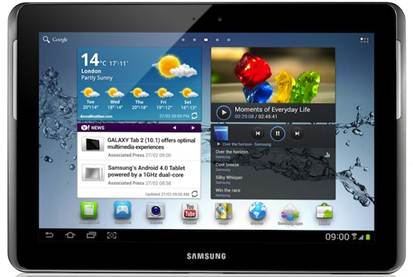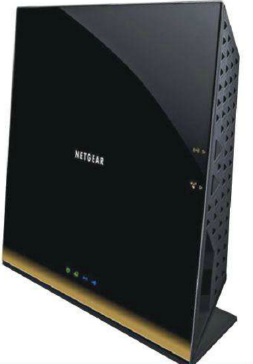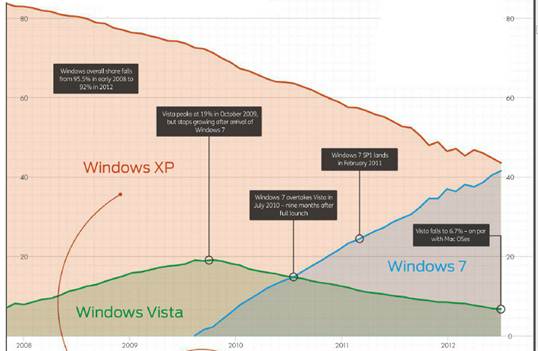Samsung’s newly-revealed
PIO features a super hi-res screen and a turbocharged Exynos 5 Dual processor.
While Apple and Samsung do battle in the
courtrooms over copyright, Samsung is working double-time to find new ideas to
push forward to the tablet market. This drive for a game-changing design has
brought to light news of the rumored Samsung PIO tablet. The PIO seems set to
take on Apple's most powerful weapon - the iPad's Retina Display - with a
stunning 2560 x 160011.8in screen, as well as the new Exynos 5 Dual processor.
While Apple's iPad Retina Display boasts
264ppi in a 9.7in screen, the PIO will pack 256ppi into a larger 11.8in screen
- displays being an area in which Samsung certainly has some experience. Then
there's the Exynos 5 Dual chip (dual core, as the name suggests), which Samsung
is suggesting will be nearly twice as fast as the current A9.

Samsung
takes aim at the iPad with the P10 tablet
Netgear and Broadcom tell us why early adopters shouldn’t
be afraid of the new gigabit wireless standard.
Historically the transition to new Wi-Fi
standards has been a horrible mess. With the launch of the current 802.11n
standard, for example, we saw several different types of products, all based on
the same draft version of the standard. Dubbed Pre-N and Draft-N these devices
lacked interoperability, which made for an incredibly messy transition, and a
whole bunch of products that were effectively rendered useless once the 802.lln
standard was ratified.
It is important to keep this situation in
mind when looking at the next wireless standard, 802.11ac. Informally known as
Gigabit Wi-Fi, we are already seeing routers on the market, and USB adapters
will start appearing in the coming months. This is despite the fact that the
standard won't be ratified until early next year.
Given that early adopters were burned by
the transition to 802.11n, skepticism is to be expected over these first
generation products. To get a handle on just what has changed, we recently
talked 802.11ac with Netgear's VP of Product Management, Retail Product, David
Henry and Senior Director of Product Marketing for Broadcom's Mobile and
Wireless Group, Dino Bekis.
According to Henry the most significant
difference between the 802.11n transition and the 802,llac one is that there
were at least three different manufacturers pushing solutions in the lead up to
802.11n, which not only caused product confusion but delayed the actual
ratification of the standard. This time around, Broadcom is the first company
with 802.11ac silicon.
Bekis reinforces this, saying that
"the industry learned lessons with 802.11n". The changes to the
specification not only caused confusion, but they delayed the adoption of the
standard. With 802.11ac, on the other hand, the industry "recognized the
importance of quickly converging".
Not only is there an inherent compatibility
advantage in the already wide adoption of Broadcom's various processors, but
both Henry and Bekis assured us that any changes made between now and the
ratification of 802.11ac would be handled with software updates and not via
changes to the base design of the hardware.
As Bekis put it, "For early adopters
the best case will be no issue at all, the worst case will involve driver or
firmware updates". This is something reinforced from Netgear's
perspective, with Henry telling us the currently-absent 802.11ac features like beam
forming will come with software updates rather than hardware revisions.
The other big piece of the puzzle is going
to be 802.11ac clients. While Netgear was first with an 802.11ac router, its
R6300, there are now numerous routers on the market (all using Broadcom's
processor). Netgear expects to have USB adapters available locally towards the
end of September, but both Henry and Bekis indicated that it will be CES 2013
where we will see a large number of devices announced with 802.11ac support.

802.11ac
is not destined to repeat the mistakes of the 802.11n launch
XP: Still the popular choice
Windows 7 has sold 675 million licenses
worldwide, but is only now yanking the top spot from XP. Will Windows 8 dent
XP's market share, or will it have as little impact as Vista?
Why is the 11-year-old OS so popular? It
continues to be the default choice for developing markets such as China and
India, but it holds almost 20% in more developed countries, too.

Windows
version market share (global percentage)